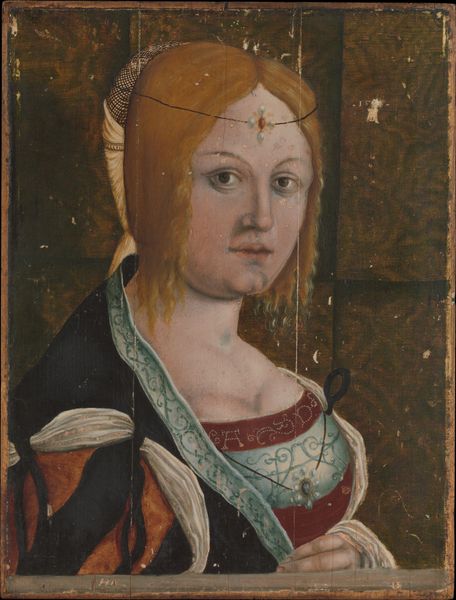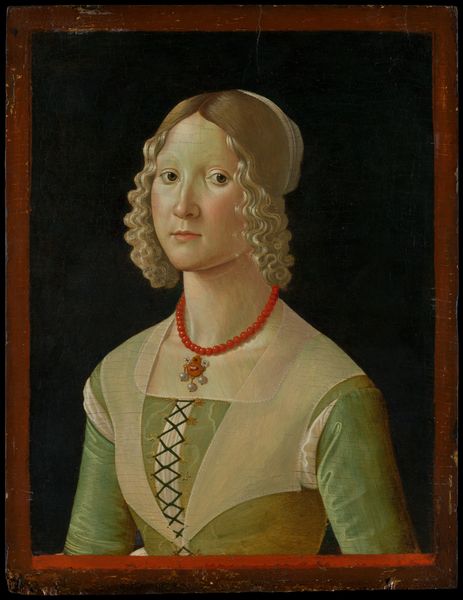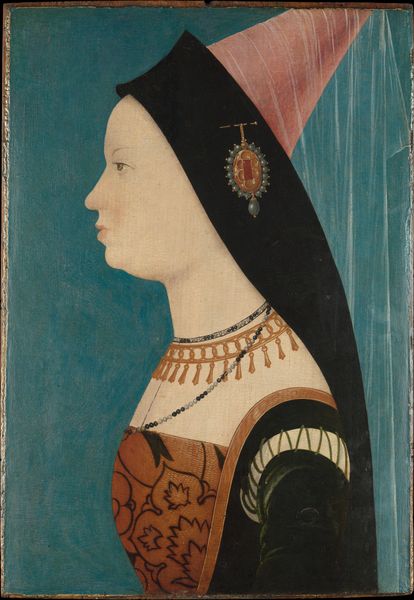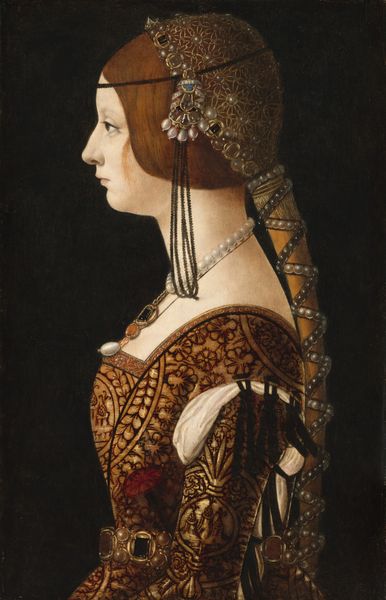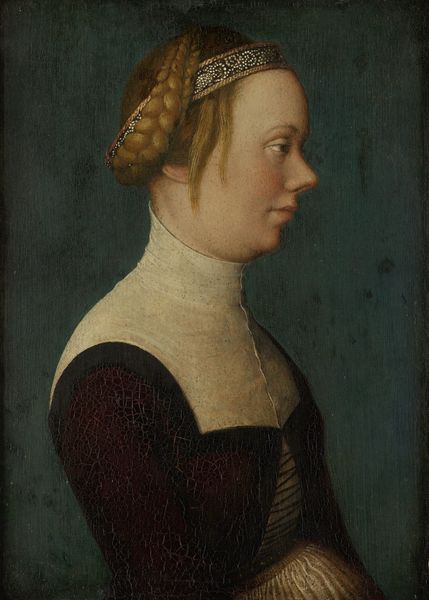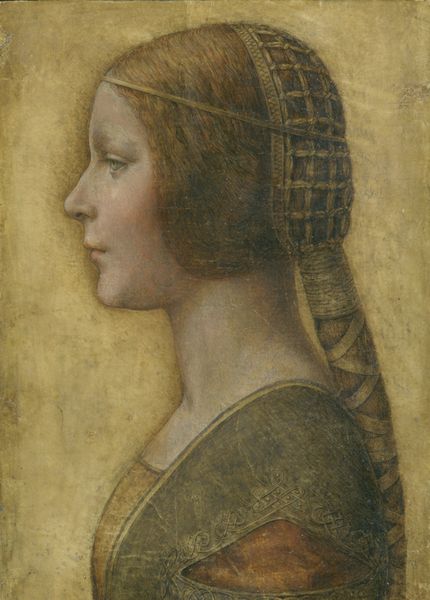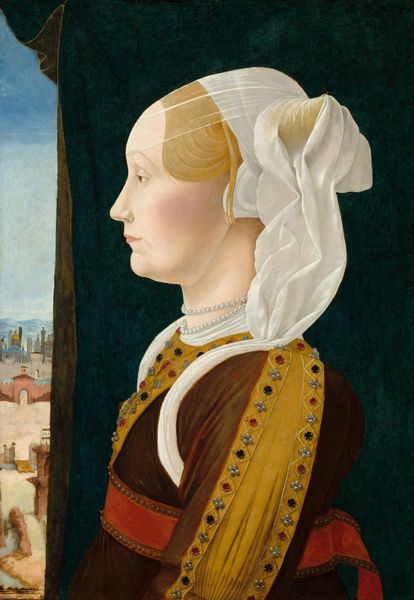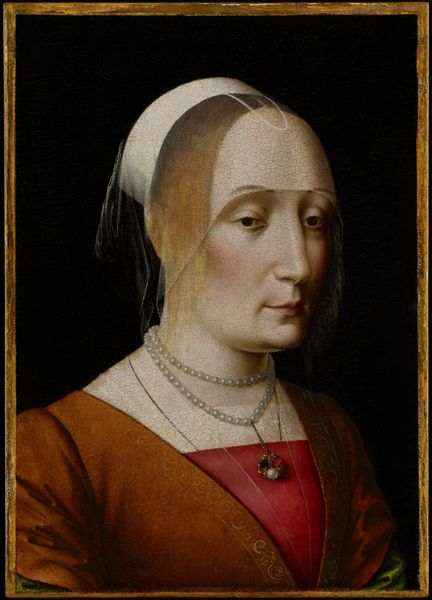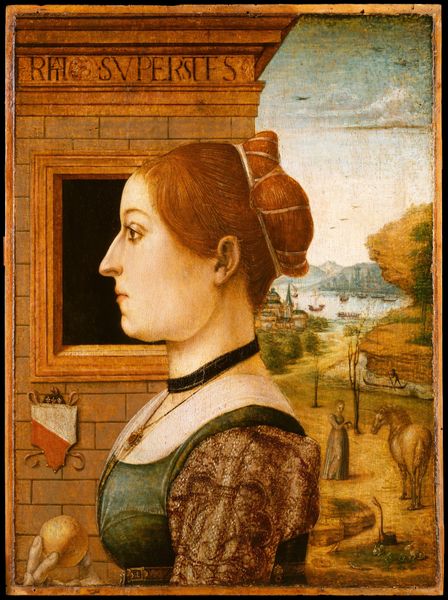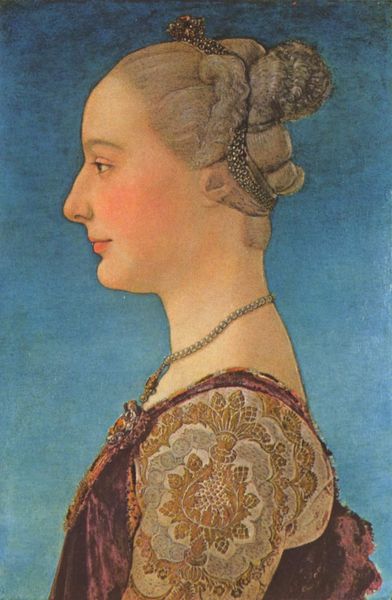
Portrait of a Woman 1475 - 1485
0:00
0:00
painting, oil-paint
#
portrait
#
painting
#
oil-paint
#
figuration
#
11_renaissance
#
oil painting
#
history-painting
#
italian-renaissance
Dimensions: 19 1/4 x 13 7/8 in. (48.9 x 35.2 cm)
Copyright: Public Domain
Curator: Piero del Pollaiuolo, active in Florence, painted this striking "Portrait of a Woman" sometime between 1475 and 1485. What's your first reaction to her presence here? Editor: Immediately, it’s the sense of restraint that gets me. She’s beautiful, richly adorned, yet her gaze seems to hold back, as if she's guarding a secret or perhaps resigned to her place. Curator: Renaissance portraits often functioned within very specific social scripts. Consider the commissioning of such a piece—the ways in which wealth and status were communicated, and the subtle negotiations around power. How does that shape your read of her "resignation?" Editor: It's complex, isn't it? Her expensive dress, the meticulous detail of the embroidery, positions her within the upper echelons. But the painting itself also *creates* her identity, within the patriarchal gaze. We are positioned as viewers deciding on her worth through her looks. Curator: Indeed, that intersection between representation and social role is crucial here. The work exemplifies how institutions like noble households and workshops like the Pollaiuolo brothers collaborated to shape identities. The act of portraiture, particularly for women, was hardly neutral. Editor: Right. Looking closely, you see those pearl-studded hair ornaments, the delicate necklace - material signs but they also subtly push the image into discussions about power and control. I wonder, to what extent could *she* control the representation of self? Curator: Control was limited. Commissioning often dictated pose, dress, even idealized features. That said, the choice to depict her in profile – avoiding direct engagement with the viewer – perhaps signals a deliberate attempt to assert some modicum of control or retain a degree of unknowability. What are the possible reasons for this artist’s approach, versus more of a three-quarter presentation, a more ‘engaging’ option for portraiture at the time? Editor: That distance feels incredibly contemporary. This is an intimate picture, yes, but it reflects our understanding today that there is always an imbalance in how people—particularly women— are represented, made objects of scrutiny by systems of power. It's fascinating to think of this artwork as not simply *of* its time but speaking *to* our own. Curator: Agreed, thinking of it in those terms certainly reframes the quiet stoicism you observed. A piece reflecting how, across centuries, representation remains entwined with socio-political agendas. Editor: It pushes me to consider how we can, as viewers today, question and subvert entrenched practices and consider this history critically, bringing forth discussions of identity and representation.
Comments
No comments
Be the first to comment and join the conversation on the ultimate creative platform.

